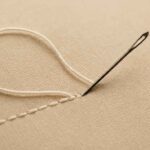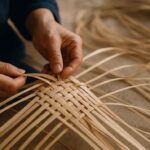Every successful sewing project begins with a stitch. The choice of nahttypen, the types of seams and stitches you use, can turn a simple piece of fabric into something durable, elegant, or uniquely expressive. From everyday clothing to bespoke home décor, the right seam determines not just strength, but also how a garment or textile moves, stretches, and holds together over time.
Sewing enthusiasts often overlook how much impact a carefully selected stitch can have. Using the wrong stitch type can result in fraying, weak seams, or a finished product that looks unpolished. Understanding these techniques is less about memorising rules and more about building intuition, a skill that separates hobbyists from professional-level craftsmanship.
What Nahttypen Really Means
At its core, a nahttyp is simply the method of joining two pieces of fabric. But the implications are broad: different stitches affect elasticity, seam durability, and visual finish. Knowing which stitch to use is as critical as choosing the right fabric.
- Hand stitches vs. machine stitches: Hand sewing allows precision and decorative finesse, while machine sewing offers consistency, strength, and efficiency for larger projects.
- Practical impact: The right stitch enhances both the lifespan and comfort of the final piece, particularly for frequently used garments or textiles.
Key Types of Nahttypen
Different stitch types serve distinct purposes, from structural support to decorative touches. Here’s a closer look at the most common ones.
Straight Stitch
The straight stitch is the backbone of most sewing projects. It’s simple, reliable, and perfect for non-stretch fabrics like cotton or linen. Whether sewing shirts, tote bags, or pillowcases, this nahttyp provides clean lines and dependable strength.
Zigzag Stitch
Stretch fabrics demand flexibility. The zigzag stitch stretches with the fabric, preventing seams from breaking and edges from fraying. It’s a go-to for T-shirts, sportswear, and knit materials.
Overlock Stitch
Often seen in ready-to-wear clothing, the overlock stitch trims and finishes edges simultaneously. It prevents fraying and gives garments a professional, factory-made look. Its efficiency makes it a favourite in industrial and home sewing.
Flat-Felled and Flatlock Seams
Used for garments that face heavy wear, these seams combine strength with a polished appearance. Jeans often feature flat-felled seams for durability, while flatlock seams lie flat against the skin, enhancing comfort in sportswear or active apparel.
French Seam
A French seam is subtle and elegant, hiding raw edges within the seam itself. It’s ideal for delicate fabrics like silk or chiffon, giving garments a refined, professional finish.
Choosing the Right Stitch for the Right Fabric
Not every nahttyp works for every fabric. Choosing wisely prevents frustration and ensures professional-looking results.
- Fabric thickness matters: Heavier fabrics like denim need strong, structured stitches. Lightweight fabrics benefit from gentle, flexible seams.
- Machine settings count: Needle type, stitch length, and thread tension affect how neatly a stitch sits. Testing on scraps first avoids costly mistakes.
- Combining stitches: Many projects use multiple stitches for the best results. A straight stitch may provide structure, while a zigzag edge protects against fraying.
Practical Tips for Better Seams
Achieving professional-looking seams is about preparation and attention to detail. Here are practical insights that improve results:
- Needle and thread selection: Match needle size to fabric thickness; choose thread type to complement material properties.
- Control tension and stitch length: Uneven tension leads to puckering or loose seams. Fine-tune settings on scrap fabric first.
- Guide fabric carefully: Pulling fabric while sewing stretches seams. Maintain even pressure for smooth, flat results.
Real-World Applications
Professional designers rely on thoughtful nahttypen choices in everyday work:
- Jeans and outerwear: Flat-felled seams endure heavy wear while maintaining clean edges.
- Activewear: Overlock and zigzag seams prevent fraying and accommodate stretch.
- Luxury garments: French seams keep delicate fabrics pristine and visually flawless.
By observing these principles, even home sewers can achieve results rivalling factory standards.
Why These Choices Matter
Understanding nahttypen isn’t just about technique’s about the experience and longevity of the finished product. Strong seams mean clothes last longer, fabrics maintain shape, and garments feel comfortable. Attention to detail at the stitching stage can prevent repairs, save time, and make handmade creations truly professional.
Conclusion
Mastering nahttypen elevates any sewing project. From foundational straight stitches to elegant French seams, each choice shapes durability, comfort, and aesthetics. Whether you sew for personal use or aspire to professional-level results, a deep understanding of stitch types allows your work to be functional, beautiful, and enduring.










